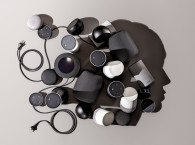
Sales of soundbars over the last decade exceed expectations, thanks to sound quality, ease of use, and new technology. The integration of voice assistants in soundbars has helped a relatively new market sector grow far quicker than originally expected, according to market analyst SAR Insight & Consulting.
Furthermore, despite initial concerns to the contrary, soundbars have continued to assert their dominance in the living room without impacting negatively on the adoption of voice controlled smart speakers.
According to ‘Soundbars: Technology Trends, Market Growth and Competitive Analysis’ from SAR Insight and Consulting, several factors have helped the soundbar market grow beyond simply filling a need to provide better sound quality.
“The sales of soundbars really gained traction in about 2010 when they offered to replace the sound quality lost as TVs became thinner,” Peter Cooney, SAR's founder and research director, and the report’s author, says. “Since then, sales have not only grown because they provide a greater quality of sound, but they are significantly better than the alternatives from a consumer’s point of view.”
Chief among these is the simplicity offered by soundbars. Where high-end receivers and ‘home theater in a box’ systems require an element of setting up, soundbars are often ‘plug and play’.
“Also, soundbars are discreet and offer other services that appeal to consumers,” Peter adds. “For example, some people use soundbars as general audio units, and some manufacturers – such as Sonos – engineer the sound so that it is favorable to music fans. There are also options to extend the systems to improve the sound quality further.”
This has been encouraged by incorporating support for new formats and technologies, such as Dolby Atmos, which offers a far more immersive sound, and is now found in mid-tier devices, rather than confined to the more expensive units.
“The most striking development from an analyst’s point of view, though, has been the adoption of voice assistants. There was always an assumption that the wide uptake of soundbars would affect the growth in smart speakers as homeowners chose one or the other for the living room. However, we haven’t seen this play out in the figures," Peter Cooney states.
"This has even been the case as manufacturers have added voice assistants and voice control to their soundbars, often allowing the user to control some TV functions.
“Looking forward, it will be interesting to see how the market develops as TV OEMs also include that same technology in their products.”
The report "Soundbars: Technology Trends, Market Growth and Competitive Analysis" from SAR Insight and Consulting contains in-depth analysis of the soundbar market, including market drivers and challenges, projected sales figures, the leading brands, and the technology behind the products. The study is published as part of its Home AV Equipment service.
www.sarinsight.com







